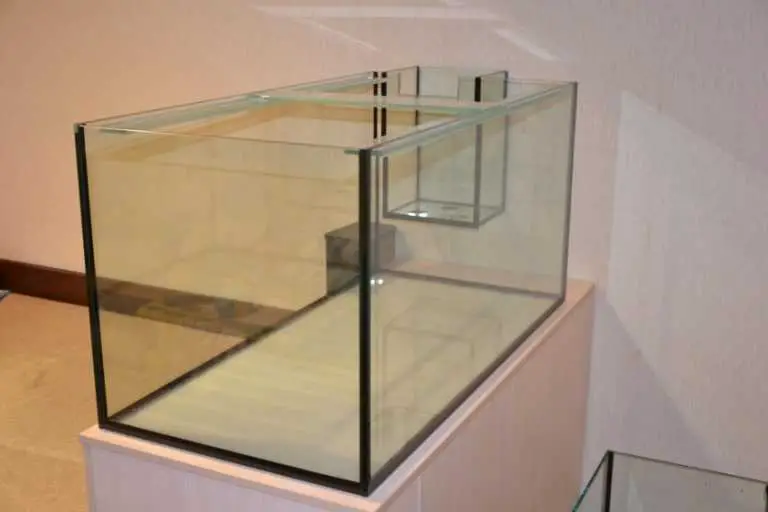When repairing aquariums, only safe formulations are used that meet a number of requirements. It is necessary to take into account what sealant is safe for aquariums, how long the aquarium sealant dries, how resistant it is to moisture, whether the glue contains toxic components. It is advisable to choose special tools, which are offered in several types.

Table of Contents
aquarium sealant Pursose and Compostion
Manufacturers offer different formulations: acrylic, acid, polyurethane, butyl, silicone. The glue is chosen taking into account the purpose of use.
PURPOSE
The compositions are used for:
- Build new aquariums. Fish lovers do not always purchase ready-made designs. Experienced breeders collect containers of the desired configuration with their own hands. This helps to create a structure with the required parameters and save money.
- Repair existing containers. When using aquariums, the joints lose their tightness, the glass cracks. In such cases, it is not necessary to dispose of the container. Defects can be closed with glue-sealant.
- Installation of decorative items in the aquarium. The tool is used when fixing objects on the bottom or walls of the tank.
COMPOSITION
Sealing agents can be made on the basis of:
- acrylic, which has not very good adhesion, is unstable to moisture;
- polyurethane, polysulfide or bitumen, characterized by insufficient strength and safety;
- epoxy resins, characterized by a long curing period, which complicates the application;
- silicone, characterized by increased elasticity, resistance to moisture, safety, good adhesion to smooth surfaces.
Advantages of Safe aquarium sealant
The positive qualities of such a composition include:
- safety for the inhabitants of the aquarium;
- maintaining strength and high elasticity for a long time;
- short hardening period (no more than half an hour);
- long service life of the connection;
- the optional presence of special skills for the formation of the seam;
- the ability of the connection to withstand increased loads.
What Sealant Is Safe For Aquariums?
In our point of view, silicon sealant is safe for aquariums. The silicone sealant is available in 2 colors: transparent and dark.
Aquariums Sealant should be
The glue should be:
- Safe (this is the main requirement for the compositions used for the repair of aquariums). The toxic substances released by the sealant poison fish and plants. It is undesirable to use formulations with synthetic additives
- Elastic (tear-resistant). The connection must be able to withstand the pressure exerted by the water. Material that is too hard will crack over time.
- Free of antibacterial additives. Sometimes silicone is injected with antifungal agents that are harmful to aquatic plants and fish.
- Does not contain dyes harmful to the inhabitants of the aquarium.
- Reliable, withstand temperature extremes.
- Neutral, acid-free.
How to choose Safe Sealant For Aquariums?
When buying funds, take into account:
- Colour;
- the presence of a mark “For aquariums”;
- duration of hardening.
It is recommended to buy sealants in trusted stores that can show certificates of conformity. Counterfeiting can ruin the aquarium or poison its inhabitants. Pay attention to the date of manufacture.
Over time, the glue loses its elasticity. You need to buy a properly packaged, fresh sealant.
A safe elastic product used for sealing internal seams, installing hardware and decorative items.
Expert Recommendation on selection Sealant for aquarium

The joints are sealed like this:
- Treat the areas to which the glue will be applied with a degreasing compound. Dry the surfaces thoroughly.
- Masking tape is glued on to help get an even connection.
- Cut the tube cap off at a 45 degree angle. The hole must have a diameter that matches the width of the joint.
- Begin to squeeze out the sealant by slowly moving the tube from bottom to top. This makes the seam better.
- Level the applied sealant using a spatula or stick moistened with water.
- Remove excess composition before it hardens. Remove the masking tape.
- Leave the reservoir until the joints are completely dry. Fill the container with water, checking the quality of the connections.
FAQs about Aquarium Sealant
How long silicon sealant take to dry in aquarium?
Silicone compounds set in 20 minutes. Some materials take half an hour to harden. The full curing period lasts 20-24 hours.
CAN SUPERGLUE BE USED IN AN AQUARIUM?
Super glue is not used for gluing aquarium glass but is used for gluing various decorative elements such as mosses, Anubis, stones, and so on.
The base of the glue should be cyanoacrylate, then after polymerization, it will be safe for your fish. The most convenient way is to use gel-like super glue.
Glue everything dry and after polymerization, it is worth placing the glued elements in a container of water for 30 minutes to make sure that everything is glued together.
In an aquarium, it is advisable to glue the plants on a dry surface and not on a damp surface so that they hold better.
When to fill the aquarium after gluing?
Can be poured one day after gluing. If there are smudges, drain the water and glue the smudges. After the first flood of water, you need to let the aquarium stand for a day, then drain the water, then start it up as expected.
How long does acrylic sealant dry?
Acrylic sealant is not suitable for aquariums because it does not tolerate constant exposure to water and is used in dry joints. It dries superficially for 2 hours and dries completely within 4 weeks.
How to dissolve silicone sealant at home?
In order to soften the hardened layer of silicone sealant, it is necessary to use special chemical-based solvents.